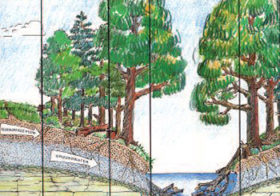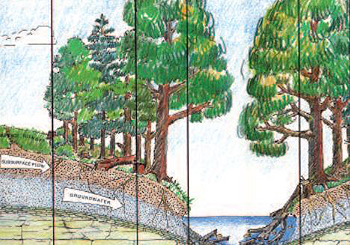A strip of forest along a stream channel, also called a riparian forest buffer, has been proposed and used for decades as a best management practice to protect streams by filtering out contaminants from agriculture and other land uses before they can enter them. Their benefits are many, but one benefit has dominated social and political conversations, and that is their role in preventing contaminants from entering streams. A few years ago, Stroud Water Research Center proposed that riparian forest buffers also play another important role by improving the health of the stream and enabling it to provide more and better ecosystem services for both humans and wildlife — the processing of natural organic matter and pollutants, for example. Thus, a forest buffer provides a first line of defense (keeping sediment and nutrients out) as well as a secondary line of defense (keeping sediment and nutrients from moving downstream) for maintaining clean water in our streams and rivers.
READ MORE AT http://tinyurl.com/n9s57gk



